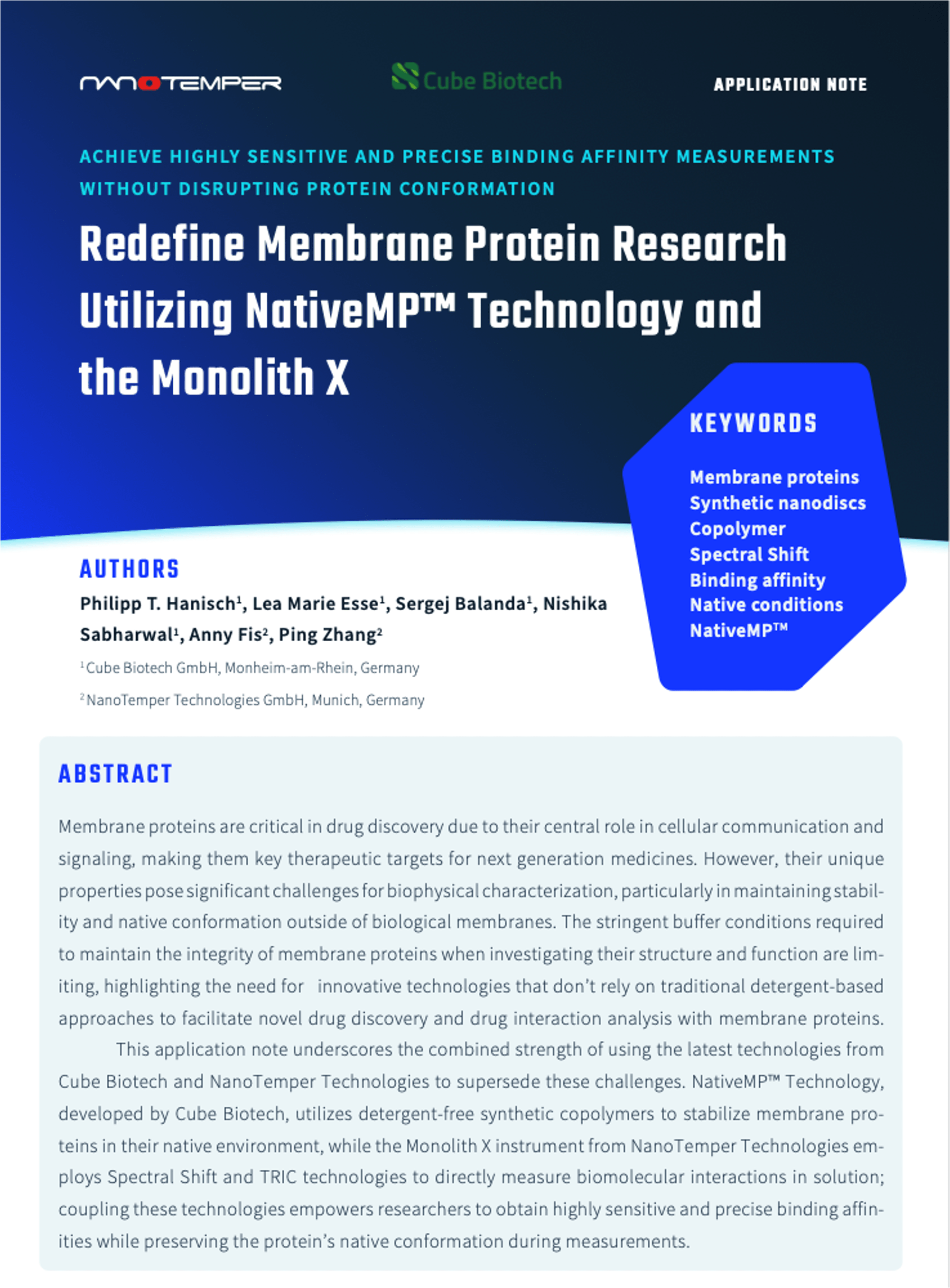Bernhard, M. & Laube, B.
Scientific Reports 2020, vol: 10 doi: 10.1038/s41598-020-73157-2
Abstract
The glycine receptor (GlyR), a member of the pentameric ligand-gated ion channel family (pLGIC), displays remarkable variations in the affinity and efficacy of the full agonist glycine and the partial agonist taurine depending on the cell system used. Despite detailed insights in the GlyR three-dimensional structure and activation mechanism, little is known about conformational rearrangements induced by these agonists. Here, we characterized the conformational states of the α1 GlyR upon binding of glycine and taurine by microscale thermophoresis expressed in HEK293 cells and Xenopus oocytes after solubilization in amphipathic styrene-maleic acid copolymer nanodiscs. Our results show that glycine and taurine induce different conformational transitions of the GlyR upon ligand binding. In contrast, the variability of agonist affinity is not mediated by an altered conformational change. Thus, our data shed light on specific agonist induced conformational features and mechanisms of pLGIC upon ligand binding determining receptor activation in native environments.
Topics: Monolith, MST, Membrane Proteins, Publications










